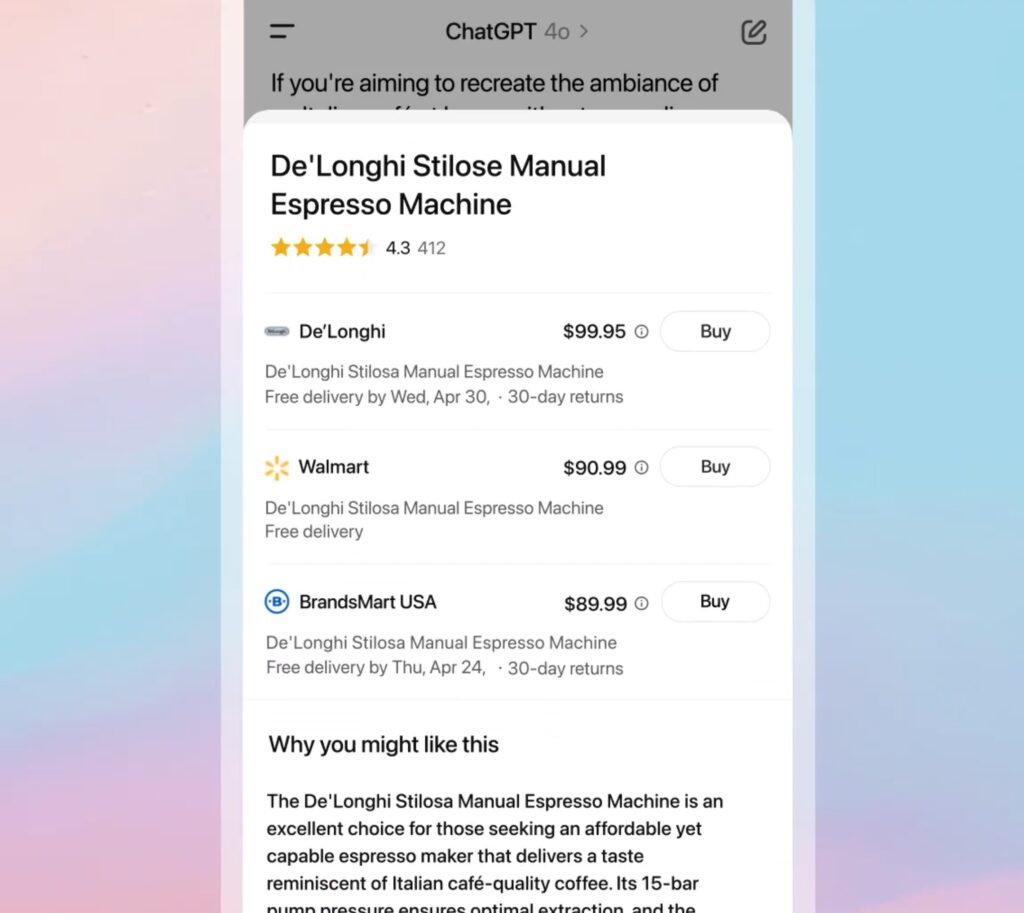OpenAI is moving beyond conversations to guide your shopping decisions. ChatGPT’s new Shopping feature aims to revolutionize how people find and buy products online. Now, you can compare products, check reviews, see prices, and even shop—all without leaving the chat interface.

From Product Comparison to Conversational Consultant
Until now, shoppers had to juggle dozens of websites or lean on Google Shopping for answers. ChatGPT wants to make it smoother and more personal. The new shopping feature, embedded right in the chat, delivers:
- Visual product cards with images, reviews, and real-time prices.
- Direct links to online stores.
- Tailored recommendations based on your preferences and past chats.
OpenAI insists these recommendations aren’t paid ads but independent outputs from its model—for now.
Strategic Monetization: Free for Now, but Paving the Way
History shows that free digital tools often lead to ad-driven revenue. OpenAI is currently training users to turn to ChatGPT for shopping decisions. Once that habit sticks, ads or affiliate fees could follow.
The stakes are high. OpenAI aims to hit $125 billion in revenue by 2029, up from about $4 billion in 2023. With ChatGPT already clocking over a billion weekly searches, the shopping feature taps into a massive opportunity to capture e-commerce attention.
User Experience: Fewer Links, More Answers
Adam Fry, ChatGPT’s search product lead, says this isn’t just about product picks—it’s about understanding what users need. Unlike traditional price comparison tools, ChatGPT doesn’t rely on rigid algorithms. It interprets your language, priorities, and context to deliver natural, conversational responses.
It pulls from professional reviews, Reddit threads, and blog comparisons, presenting everything in sleek, visual cards with buy buttons. This cuts through the clutter of endless tabs and search results.
The Catch: Who Pays for the Content ChatGPT Uses?
One big question looms: how will content creators be compensated? Many sites rely on affiliate links or sponsored reviews for revenue. ChatGPT uses their content to fuel its answers but doesn’t share the profits—yet. Legal battles, like one with The New York Times, highlight the tension. If OpenAI wants to keep its shopping feature accurate and fresh, it’ll need to figure out how to fairly reward these sources.
Wrap-Up: ChatGPT Is Changing How We Search and Shop
ChatGPT Shopping could reshape buying habits, much like Google or Amazon did. For brands, e-commerce stores, and agencies, this brings challenges and opportunities:
- Get closer to customers’ decision-making moments.
- Optimize product data and store structure for AI language models.
- Master a new kind of product search and comparison.
At New School Digital, we’re tracking these shifts in digital behavior from the ground up. We help clients adapt to new channels, fine-tune content to appear in relevant AI outputs, and find growth in an AI-driven world.
Want to stay ahead of the curve? Reach out.
Source: focus-age
May 2025


